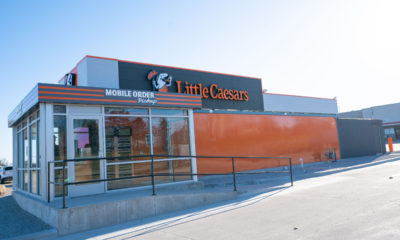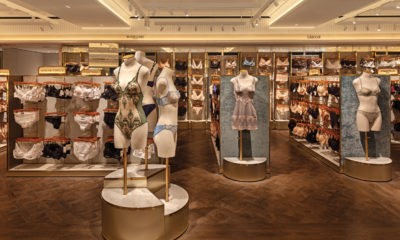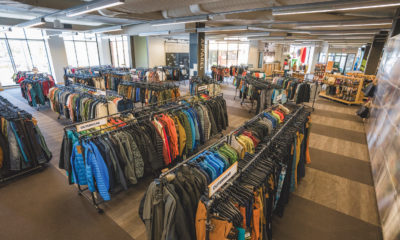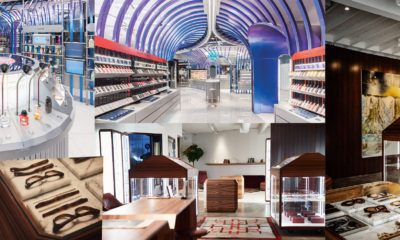It used to be a gamble for retailers to source fixtures overseas. Sure, the price might be cheaper, but would the quality be as good? Would containers be shipped in time to meet deadlines? Could you get custom work or just stock parts and metal racks?
Much has changed in this global market over the last five years. More retailers are regularly sourcing complete fixture systems from foreign businesses. So are domestic fixture manufacturers, in a variety of partnerships and other arrangements. And the products being shipped over are higher in quality and delivered in a more efficient manner than before. So what’s changed?
Why It’s Working
One thing is for sure: More manufacturers in North America have established working relationships with Asian facilities, specifically in China, Singapore, Malaysia, Vietnam and Taiwan. “It used to be that you had to find your own overseas resource, but now most domestic manufacturers I talk to have partners in other countries,” says Mollie Hansen, director, retail marketing, for Converse Inc., the sporting goods manufacturer that’s now a subsidiary of Nike. “This interaction has made quality more consistent across countries and ultimately more efficient.”
One such manufacturer is Hamilton Fixture (Hamilton, Ohio), which started looking for an overseas partner after a client pressured it for lower prices. The client wanted to start talking to Hamilton’s competitors until Hamilton got a bid from an overseas manufacturer that couldn’t be beat. “We maintained the business by going overseas,” says Jim Comarata, Hamilton’s vp, sales.
Since Hamilton had strictly been a wood fixture fabricator, the overseas relationship not only saved a client but also expanded Hamilton’s product offering. “Today we can source almost anything from China, including wood, metal, wire, acrylic and injection-molded parts,” says Comarata.
But Hamilton has a growing number of competitors. In 2005, Kevin Chaney started Lotus Fixtures with partner Todd Jacobsen. The North American company, with offices in Seattle and Zhangjiagang, China, and production facilities outside Shanghai, sources custom loose displays and p-o-p units for clients in the U.S., Europe, Asia and Australia.
Chaney says Chinese sourcing has greatly improved over the last five years thanks to Beijing’s aggressive efforts to encourage foreign investment and international trade, while improving the country’s infrastructure.
As such, many North American companies have learned how to combine their domestic services with expanded offerings from overseas partners, leading to further improvements in quality control and variety of work available. And that’s a caution for North American retailers: Don’t depend entirely on Chinese suppliers.
“Offshore manufacturing will continue to grow, but there will always be the need for U.S.-based production driven by tight timelines, smaller runs and those displays that simply don’t ship conveniently,” says Chaney. “Therefore, there’s great value in marrying domestic and offshore production.”
Experience Is the Key
More companies working abroad has led to greater experience in dealing with manufacturers who are farther than a day’s trip and few time zones away.
One lesson learned: It’s vital to have a full-time project manager abroad to handle the day-to-day nuances. “You absolutely need someone there on the ground,” says Lotus’ Chaney, who lives in China while business partner Jacobsen operates out of Seattle. “You would never think to run a business from 8000 miles away.”
Steve Pottschmidt, director of design development for design firm Chute Gerdeman (Columbus, Ohio), says in the last five years, he’s watched domestic suppliers learn how to weed out the quality issues with their overseas partners. “And the team members living overseas provide that added level of project management,” he says.
Many U.S. manufacturers doing business with the Chinese have also worked on strengthening their customer service, providing daily feedback and project reports to clients to help eliminate quality-control issues. For instance, Lotus’ plant supervisors in China send photos and video footage to project managers in the U.S. that they can pass on to clients who want to be able to track a project’s progress.
Converse’s Hansen says all these improvements to the fixture sourcing process spell good news for retailers. “Any time you can save money without sacrificing quality, you are improving the business,” she says. ∫
With cheaper prices and improved quality control, China meets any retailers’ fixturing needs. Well, maybe not for everything. Next month, read why overseas fixture sourcing isn’t for everyone – or every project.


 Headlines1 week ago
Headlines1 week ago
 Headlines7 days ago
Headlines7 days ago
 Headlines1 week ago
Headlines1 week ago
 Designer Dozen2 weeks ago
Designer Dozen2 weeks ago
 Headlines2 weeks ago
Headlines2 weeks ago
 Headlines5 days ago
Headlines5 days ago
 Headlines2 weeks ago
Headlines2 weeks ago














